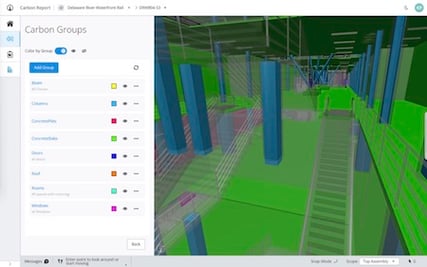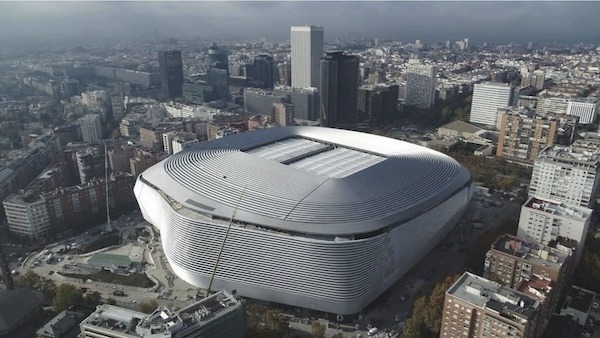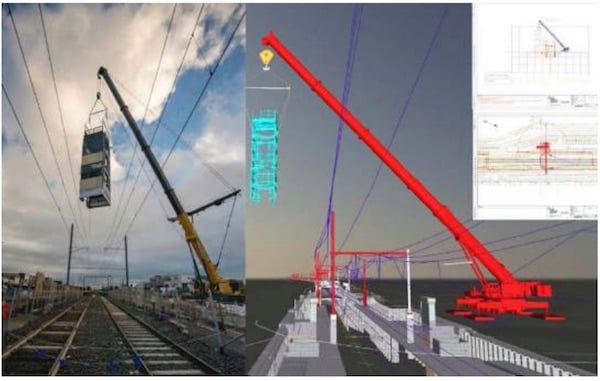
Image source: Deemerwha/stock.adobe.com.
An increased focus on sustainability in recent years has added new challenges to infrastructure projects. While dealing with already heavy workloads, infrastructure professionals also need to incorporate sustainable design practices into their projects and address wide-ranging issues involving multiple stakeholders.
“Everyone is asking for more responsible infrastructure — more sustainable and resilient infrastructure,” said Rodrigo Fernandes, director of ES(D)G — empowering sustainable development goals — at Bentley Systems, Inc. “The effort is coming from regulations, from authorities, from society, from [essentially] everyone.”
With the construction industry already facing workforce shortages, technology is playing a key role in building sustainable projects. Earlier this year, Bentley announced availability of new carbon assessment capabilities in its iTwin Experience products to help infrastructure professionals quantify carbon reduction opportunities in their projects.

Everyone is asking for more responsible infrastructure — more sustainable and resilient infrastructure,” said Rodrigo Fernandes, director of ES(D)G at Bentley Systems, Inc. Image source: Bentley Systems.
Applying New Technology
The new capabilities introduced by Bentley in June automate embodied carbon calculation reports and impact analyses, enabling infrastructure professionals to explore multiple design choices faster and drastically reduce manual calculations. Building on carbon analysis tools added to the iTwin Platform in 2022, the latest additions provide bidirectional integration with Embodied Carbon in Construction Calculator (EC3), enabling carbon assessments to be visualized in a digital twin without the need to write code.
With the newly integrated tools, users of Bentley’s iTwin Experience can export data models to EC3, a free tool for which users need to be separately registered. EC3 then performs the embodied carbon calculations and returns results that iTwin Experience reads and displays graphically.
The integration enables design professionals to perform carbon analysis on digital twin models created in various iTwin design products, according to Fernandes. “It opens the door to any type of infrastructure to calculate, report, and optimize carbon using the iTwin interface,” he said.
Embodied carbon impact calculation from EC3 can be visualized in iTwin Experience, with design elements grouped and color coded based on the degree of realized embodied carbon. Image source: Bentley Systems. Click image to enlarge.
Users with coding and software development capabilities can also use the iTwin API to develop custom interfaces and carbon calculation workflows. “As long as you use iTwin models, you can establish the workflow,” noted Fernandes.
Whether using the iTwin interface or developing custom workflows with the iTwin API, industry teams have been achieving significant time savings in carbon calculation, according to feedback Bentley has received. In some cases, carbon reporting that would take six months has been performed in six minutes, according to Fernandes. Much of the time savings has been achieved by consolidating disparate processes that relied on manual calculations and spreadsheets. “We need to bring information from multiple vendors, multiple products, and then quantify the information to map the quantities from many of these materials,” Fernandes said.
The new capabilities in iTwin Experience transform what is typically a six-month process into a six-minute workflow. Image courtesy of Bentley Systems. Click to enlarge.
Focusing on Solving the Problem
The use of technology in sustainability analysis should focus on solving actual problems, not just using new technology because it’s available, according to Fernandes. “It's important that we give value to technology to solve specific problems. It's not about the technology you use, it's about what we do with it,” he said.
As an example, Fernandes noted the growing interest in artificial intelligence (AI). “AI is something you find everywhere, but when you bring AI to the discussion, you need to bring a problem statement and ask ‘Why are we bringing AI to this?’” said Fernandes.
Keys to addressing sustainability in infrastructure include tracking and optimizing two types of carbon: embodied carbon linked to construction materials and operational carbon related to the usage of the asset, explained Fernandes. Embodied carbon in many cases may account for just 10% of a project’s carbon footprint, but “once you build something, it’s there and there's nothing you can do about it,” he said.
“[With operational carbon,] as technology moves, we are becoming more and more efficient,” said Fernandes. He cited greater use of renewable energy sources and the use of IoT technology as paths to making infrastructure projects operate more efficiently.
In addition to the focus on sustainability, infrastructure professionals also need to consider resilience of projects, according to Fernandes. At the June Environment Analyst Global Business Summit in Chicago, Fernandes participated in a panel session entitled “Developing Resilient & Sustainable Infrastructure.” “[In that session and others,] there was an interesting focus on resilience, not just about decarbonizing infrastructure but making it more resilient,” he said.
As an example of infrastructure resilience, Fernandes cited flood analysis and mitigation. “We start thinking about critical infrastructure that needs to be protected, including dams, for instance. If you want to protect them, you need to increase monitoring.” To aid the dam monitoring process, Bentley introduced the Dam Monitoring Solution, powered by iTwin, which enables users to incorporate sensor data in digital twins for contextual viewing of real-time data and associated metrics.
Another key concept is that sustainability applies to all types of infrastructure, not just buildings. “It started with vertical buildings, but we see this moving forward with linear infrastructure, with rail, with bridges, with water, including green infrastructure,” said Fernandes. “Every sector now seems to be concerned about carbon. Even if you’re building an offshore wind farm, you can be more efficient and you can not only report or quantify but also optimize the carbon that you generate.”
Engaging Industry
In reflecting on the Chicago summit, Fernandes said he found validation among infrastructure professionals that sustainability is critical for infrastructure design, and that industry professionals are facing common challenges in building sustainability into workflows. “[Infrastructure professionals] have been struggling to explain at the highest level that sustainability should be part of a business strategy for AEC companies and others,” he said. “The leaders of the companies are now saying yes, this is really important.”
To make sustainability a standard way of doing business, Fernandes sees that more awareness is needed in the industry, along with more interoperability and standardization of data formats. “Carbon reporting demands more transparency across the supply chain, more exchange of information, and an open approach,” he said, noting that the iTwin Platform is built on an open source foundation and enables working with multiple data formats.
“We want to enable users to implement carbon analysis and optimization as a natural, repeatable, and standardized procedure, as part of managing every type of infrastructure project, anywhere in the world. The sooner that carbon assessment is integrated into an infrastructure project, the bigger the carbon reduction opportunities will be,” said Fernandes.
Regarding the shortage of industry professionals to handle the growing wave of projects, Fernandes said technology can help bridge that gap. “We want environmental engineers to focus on more important roles, and not on manually aggregating data and creating spreadsheets, which is time-consuming. With our automated workflows, engineers can handle 20 projects vs. only one, moving from six months to six minutes. In many cases, companies say no to projects because they don’t have the capacity to handle them. The only way to answer all these questions is to expedite the process of analysis in sustainability,” said Fernandes.
In an industry often challenged to do more with less, the new sustainability technology could provide welcome relief in shortening analysis times. By allowing professionals to focus efforts on other tasks, technology might even offer another type of sustainability. In addition to addressing environmental aspects of sustainability, the new tools might also provide operational sustainability to firms and agencies struggling to manage escalating workloads.
Watch this short excerpt of Cadalyst’s interview with Rodrigo Fernandes, discussing his biggest take-away from the recent Analyst Global Business Summit in Chicago.







Searching for more information about Architecture, Infrastructure, and Construction?
Click here!